 |
The Bead SiteHome>Ancient Beads> Middle East > Hebron
|
Margaretologist 4(1) Issue 11 1991
|
|
Hebron as Beadmaker
Hebron (El-Khalil) is one of the oldest cities in the world. Located in the West Bank, it is the burial place of patriarchs of the Jewish, Christian and Muslim faiths. As an important site of pilgrimage, dozens of records of Europeans visiting the city exist, but glassmaking is not recorded there until after the fall of the ancient glass beadmaking city of Tyre (Lebanon) to the Crusaders.
It became one of the few remaining heirs of the great Middle Eastern glass bead industry and for centuries furnished the Muslim world with small glass objects including, "Coarse glass beads...called Hersh and Munjir" (Browne 1799:303).
|
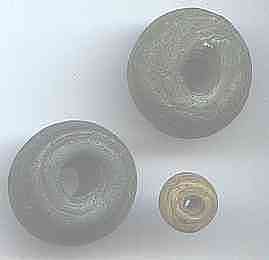
|
The beads were made of opaque glass (I suspect they used salt from the Dead Sea for their alkali) in yellow and green and less often blue, black and white.
They were wound directly at the furnace, the oldest way to make glass beads.
The Mongur (Munjir) are the large ones, while the Harish (Hersh) are smaller.
|
|
They were very widespread. They went to Egypt and from there up the Nile and into the Sudan and beyond. This Harish was found at El Mina, Ghana
|

|
|
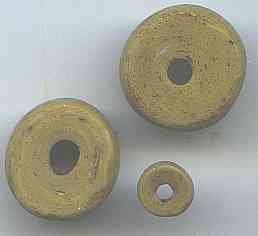
|
By the 1930s they were no long so valued. A.J. Arkell (1937) recorded them being sold for a song by Sudanese women to Hausa traders.
The traders took them home and ground down the rounded ends so the beads fit together on a strand better. They then called them after their chief city, Kano (Nigeria), giving birth to the myth that glass beads were made in Kano.
|
|
Before 1885 a different glass was being used, not locally made, but melted from bottles and other scrap glass. The more lively translucent glass was also shaped into eye beads, hands, melons and other forms.
Unlike earlier stratified (colors built upon each other) eye beads, the sequence of colors were actually smaller and smaller beads put onto the base. The "pupil" of the eye is actually the flattened perforation of the last bead in the sequence.
|
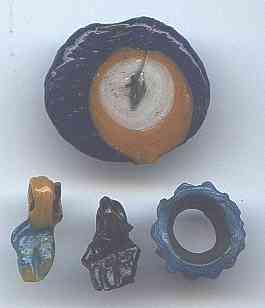
|
|
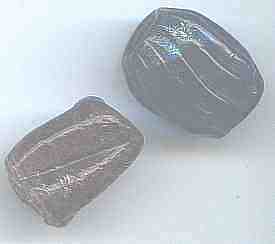
|
Perhaps around World War II the beads of fancy forms and decorations (above) were abandoned and certainly by the 1960s they were plainer monochromes. Their large holes made them popular for macramé workers.
|
|
Around 1880 some workers from Hebron moved to eastern Turkey, where beads resembling those made at that time are still produced today.
The signature remains the stratified eyes, which are actually layers of progressively smaller beads placed atop one another.
|
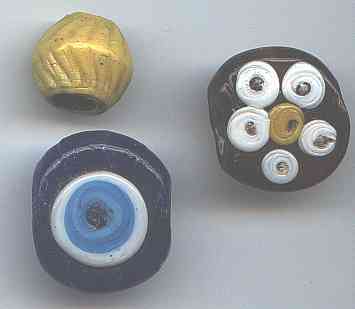
|
|
References
Arkell, A. J. (1937) Hebron Beads in Durfur, Sudan Notes and Records 20(2):300-305.
Browne, William G. (1799) Travels in Africa, Egypt, and Syria from the Years 1792 to 1796. Cadell, Davis, Longman, and Rees, London.
__________________________________________________
Small Bead Businesses | Beading & Beadwork | Ancient Beads | Trade Beads
Beadmaking & Materials | Bead Uses | Researching Beads | Beads and People
Center for Bead Research | Book Store | Free Store | Bead Bazaar
Shopping Mall | The Bead Auction | Galleries | People | Events
The Bead Site Home | Chat Line | Contact Us | Site Search Engine | FAQ
|
 |





